In Event of Nucular Attack!
In Event of Nucular Attack!
Story and photos by Chris & Connie.
Located beneath a nondescript building in a small Central Alberta town are the remains of a forgotten military bunker, constructed during the paranoia charged days of the Cold War. Today, the silent halls are sealed up and known only to a select few, in stark contrast to the floors above, busy with the comings and goings of people, most unaware of what lies deep underfoot.
Join us, in cooperation with the Canadian Civil Defence Museum Association, as we’re given special permission to document this strange and wonderful subterranean relic.
The Cold War was a time of great tension between the world’s superpowers, the USA and the USSR (Soviet Union or Russia) – or in idealized parlance of the time, the grand protector of the world, superhero Uncle Sam, the good ol’ US of A verses those Commie Pinkos, the Red Menace, those evil Ruskies. Lasting from the 1940s and into the 1990s, the period from the late 1950s to early 1970s were when worries of nuclear conflict were at their greatest. Many believed the “big one” was just around the corner, the nukes just a button push away and both sides had an itchy trigger finger!
During this delicate time, the Emergency Measures Organization, or EMO, an arm of the government founded soon after World War Two in response to the Soviet threat, was directed to establish a series of safe haven bunkers across the country. Some were huge purpose built underground vaults, near impenetrable and able to survive the worst of it for extended periods and designed to house the highest political and military leaders. These acted as command centres. Others, like the one we’ll be documenting here, were for lesser levels of government and the like. The B listers.
These “support” facilities were not as heavily built, although they were still fortresses and were designed for shorter term usage. While it’s said they could be used in any national emergency, we all know the motivation behind their construction and that was war.
This bunker is rather interesting as it’s incorporated into a non-governmental nor military building. People did and still do live above the bunker. Yes, you heard that right, it’s underneath a civilian structure.
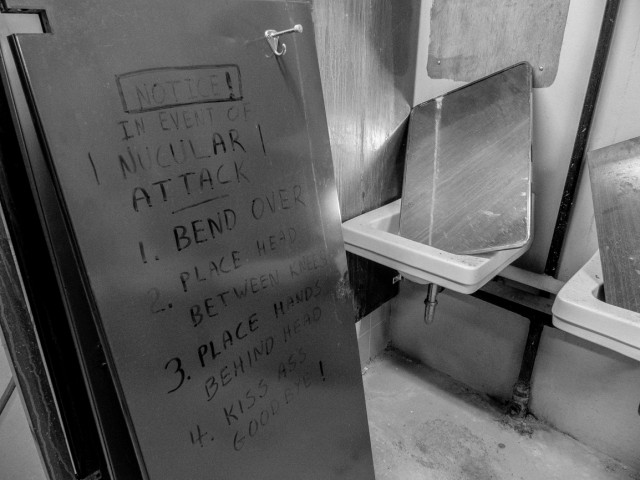
In Event of Nucular Attack!
Was this a way to “hide” the facility? Was the presence of a good sized non-military population a human shield deterrent? Or was it a just simple and cheap way to satisfy a need? We tend to think the latter. Why not incorporate it into a building already planned and share the costs? At that time anyway, tensions were easing (somewhat), outright fear turning to mild concern. With the threat not taken as seriously, budgets for such things, no doubt, were slashed as a result.
The bunker was commissioned in the late 1960s and seems to be one of the last built before the EMO gave up on the idea.
Today, the facility is forgotten, or mostly so. The building operators did, and to a point still do, use a small part of it for miscellaneous storage. Old wooden chairs fill one room, office shelving another. In one a pile of old mattresses, original base equipment it’s thought, are stacked high. Some rooms hold sports equipment, decorations and other miscellaneous bits and pieces. Many are just empty.
Access to the bunker is via the building’s main public entrance. There is no secret underground tunnel nor clandestine access point as one would expect. You came in through the front door! Taking some stairs down (or an elevator), one comes to a service basement, not really a public space, but hardly hidden. We’re not quite there yet. Only moving towards the inner core of this underground floor, via a maze of hallways, does one finally reach our goal, sealed behind a thick door that’s always locked.
The bunker is arranged in an elongated X shaped pattern. Reflecting this foot print, all rooms are are built at rather odd angles to each other. It was constructed during a time when crazy geometric experimentation, in regards to architecture, was in vogue. That the bunker follows the design of the building, even if this was a less than ideal arrangement in some ways when it came to space usage, suggests another budgetary concession.
Outside the strange arrangement, everything is laid out simply and orderly, pure function over form in typical military fashion. The outer and main walls are made of concrete, some inner ones, of cinder blocks. It appears that some formerly open rooms were walled off at some time. The look is dreary stark and bleak with the atmosphere being heavy and horribly claustrophobic. How would those working here have handled it for extended periods? It’s soul crushing (like knowing everyone outside might be dead is not?)
Wandering about the dimly lit facility one can’t help think of all those nuclear war propaganda films of old, you know “Duck and Cover” and others? Riiiight…my school desk will protect me.
In one wing of the huge complex are a series of nine open rooms off both sides of the hallway, used as the men’s living quarters. Each, according to plans, had space for eight.
At the far end of the hall is the men’s facilities and we chuckle at what’s written on a bathroom stall…
Notice!
In Event of Nucular [sic] Attack:
1. Bend Over…
2. Place Head Between Knees…
3. Place Hands Behind Head…
4. Kiss Ass Goodbye!
The world’s coming to an end! Might as well have a have a laugh…it could be your last! Were these profound words of wisdom written when the bunker was still in commission or by a later visitor who knew where he was standing?
A second hallway is reached running at a shallow angle to the first. To the left is some storage rooms or office spaces and the female living quarters, laid out just like the mens only much smaller in size. Are they painted a light pink?
A jog in the hallway takes us past a series of store rooms, the kitchen area, complete with the biggest coffee brewer/urn ever seen. Even in a post apocalyptic world, man needs coffee! “We’re the last ones alive…ahhhhh that’s some GOOD Joe!”
One room here was used for outside communications, assuming there was anyone even out there alive to listen. The thick cement walls in the bunker make for horrible acoustics and it was once lined with sound absorbing tiles. Beside it is another room, some sort of dispensary maybe for tools, recreation materials or who knows what?
Across is what we believe is the commander’s office, also once lined with those same sound canceling tiles. Next is a really large open room, almost open save for some support pillars, one of two in the complex, an operation’s centre. There are a series of parallel coves, again, at strange angles, each which housed a desk. Old bulletin boards remain on the walls at each station. Even the quietest whisper echos here and is amplified. It would have been a noisy place when in operation with direct sounds and bounced sounds mingling together and growing and growing in volume until unbearable.
In the final wing are a series of storage rooms/offices and a second large open (save for pillars) room, a second operation’s centre. That there was two is not strange and each would have been under control of different governmental or military departments. A shower is located at one end. These also could have functioned as simple decontamination units.
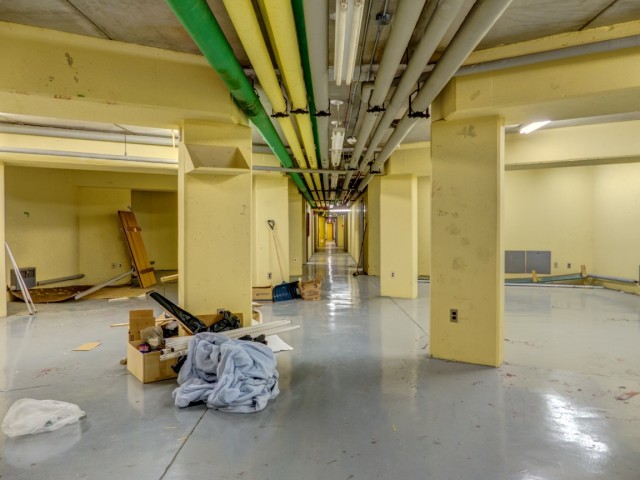
One of many stark rooms in the huge complex.
This wing of the bunker at one time hosted a Halloween party. Warnings, in blood, tell us to turn back, or face dire consequences. Seems the demons here like Lucky Lager Beer, official brew…OF HELL!
At the very end of the hall is the mechanical room which houses the bunker’s heating units, the water system and a 1960s era power generator (all once independent from the rest of the building). Everything remains in working order. Odd, the radiator unit for the diesel engine is located outside the building right out in the open, connected to it via a series of underground pipes, leaving this part of an important piece of machinery vulnerable. Perhaps it was a post Cold War modification? Even after its military career ended the generator is still used to supply emergency standby power, only now to the entire building, if needed.
There is easily room for one to two hundred people here which makes it larger than typical for a facility such as this. Generally a split shift system would be used with half the population working at any one time and the other half relaxing, eating or sleeping. People assigned here may have come from any number of government or military departments from up to a hundred or more kilometres away. Or even further – some reports make mention of politicians coming all the way from the Legislature in Edmonton to here. They’d loose themselves in rural Alberta, away from all those nasty bombs and ugly stuff.
This facility may have been a back up or secondary support facility for a larger more substantial bunker located in a town some fifty clicks north. That one was a more serious installation located on a military base and, along with others like it, there were a number across the country, dated from a more tense period of the Cold War era, the early 1960s. They were nicknamed Diefenbunkers, for the Prime Minister of the time, John Diefenbaker. The lesser bunkers, like the one shown here, may sometimes be referred similarly, but most date from after Diefenbaker’s tenure. And they’re always “lighter” duty facilities (light duty, heavy duty, what’s the difference in an all out nuclear war?).
Whether the facility was staffed full time is not known. Documents in regard to this subject are non-existent, The EMO organization, or rather those who house the records today, are naturally tight lipped on this. Military stuff is always hard to dig up. They don’t want trouble makers (us!) sticking their big noses in places they don’t belong.
No doubt tests or drills, where various emergency procedures were practiced, must have happened from time to time. In anticipation of use, all stores needed to be fully stocked, always, and all equipment made ready. Just in case.
The the exact date the bunker was decommissioned is not clear. Again, documents in support of this just don’t seem to be available. The building operator suggested the 1980s, but admittedly were not completely sure. This seems plausible as it sort of corresponds with the calming of tensions and the resultant downsizing of the Emergency Measures group.
You might ask, why in the world would Canada even be a target in a US/USSR conflict? That we’re closely aligned with our southern neighbour is no doubt one really good reason. Take out the US and one of her allies in one easy exercise.
Another is simple logistics. If Soviet missiles were ever fired or bombers dispatched, the shortest distance to the US and hence the easiest/quickest route would be via the the North Pole and over Canada. We’d be smack dab in the middle of two hated enemies. It’s conceivable, for any number of reasons, that a bomb or missile, even a US one, could hit on Canadian soil during a melee.
What the future holds in store for the bunker is unknown. Plans are afoot to change the use of the building it’s housed in, so we’ll be keeping an eye on things. For now, they asked we not divulge its location. That could change.
The Canadian Civil Defence Museum Association is a group dedicated to Cold War History in Canada and the impact it had on the country. To visit their website, go here…
CCMDA.
Another similar relic…
Cold War Shelter.
More military themed posts…
Pine Tree Line Radar Dome.
Calgary then and now – Currie Barracks Parade Square.
If you wish more information on what you’ve seen here, by all means contact us!
Date: August 2015.
Location: Central Alberta.
Article references: Canadian Civil Defence Association, town archives, site archives.
This site is on private property and there is no public access. BIGDoer visited with permission.
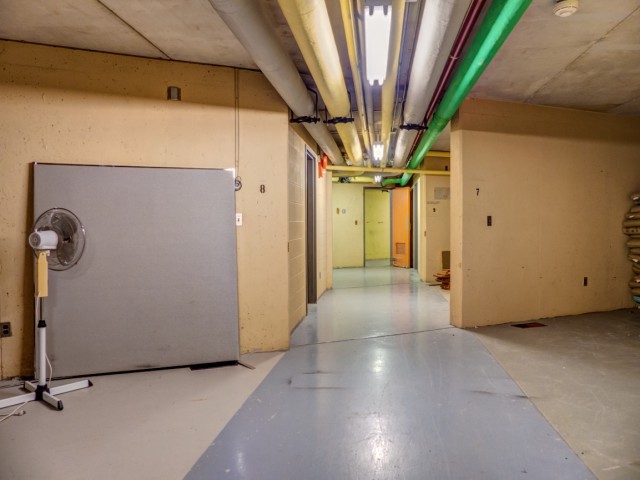
Notice how the walls are at odd angles to each other.
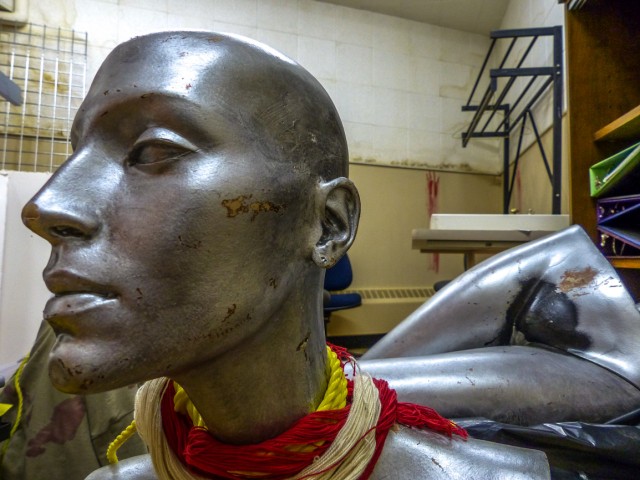
A little company on one of those long and dark post apocalypse nights…
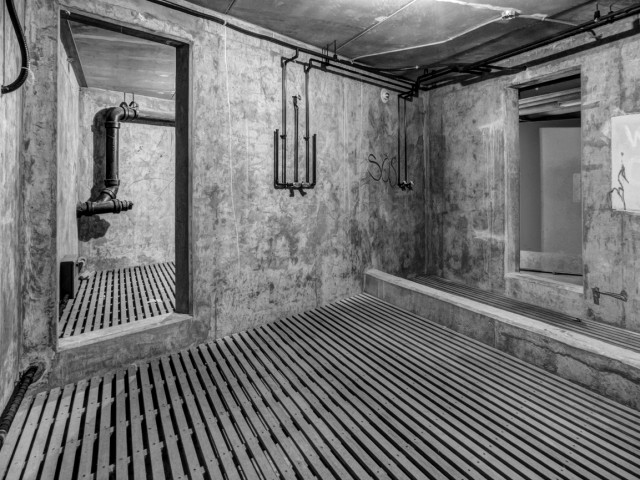
The shower / decontamination unit.
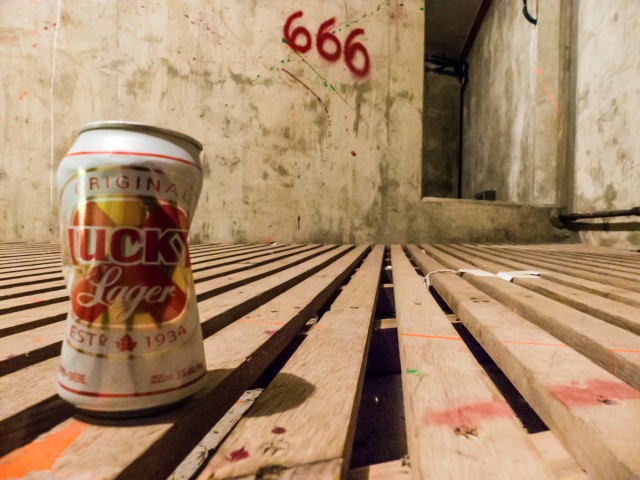
Leftovers from a Halloween party.
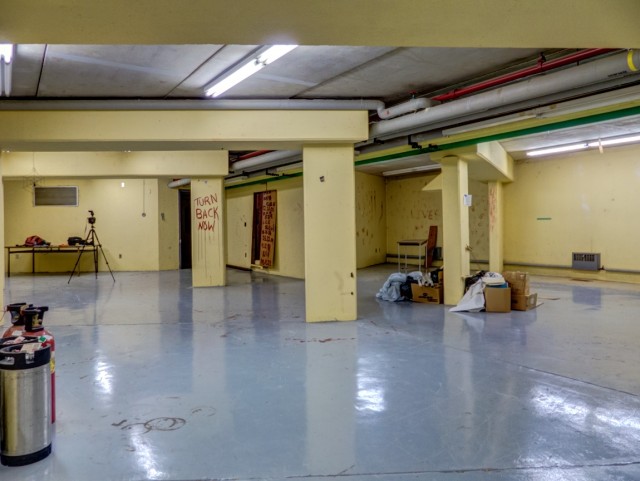
One of two command rooms. Turn Back Now!
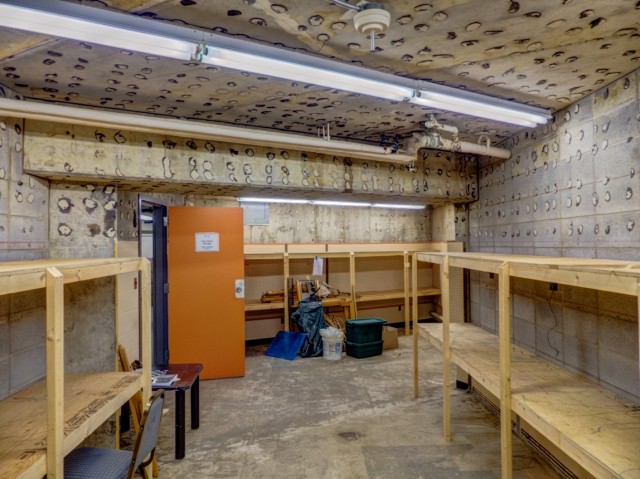
The communications room.
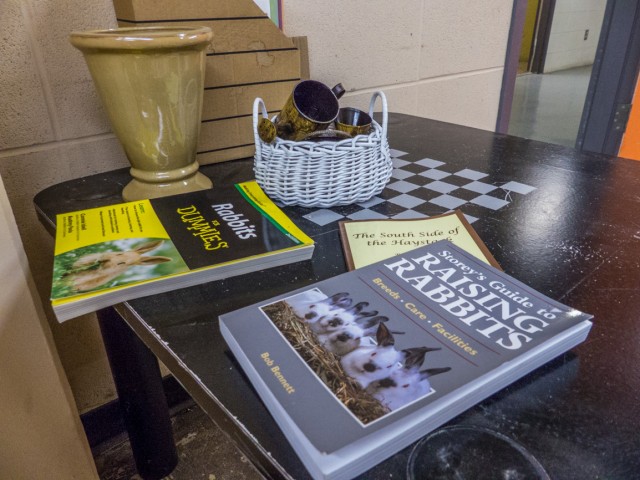
Some light reading.
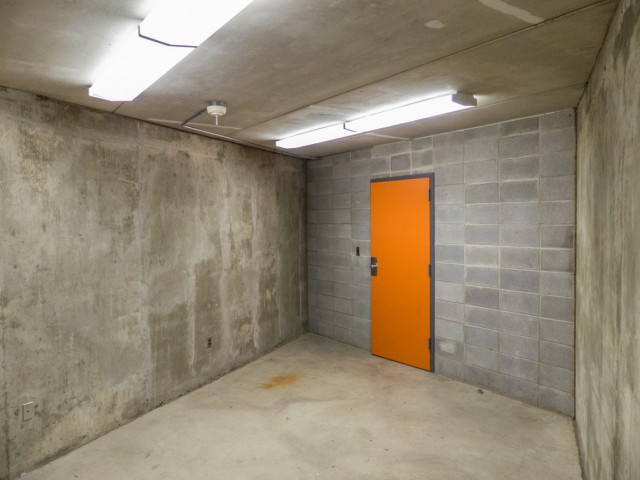
A storage room?
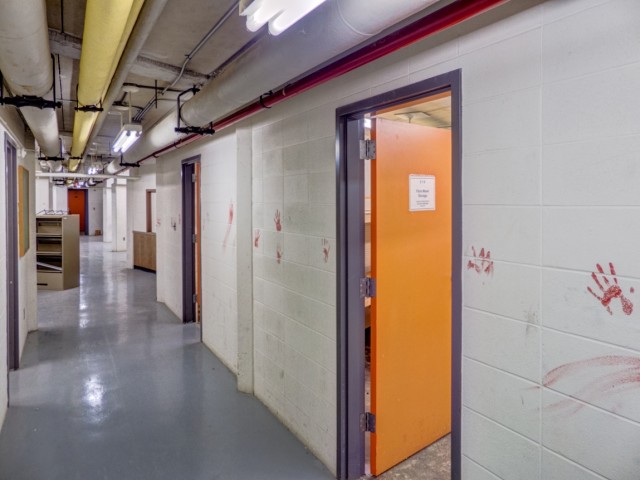
Wandering the featureless halls.
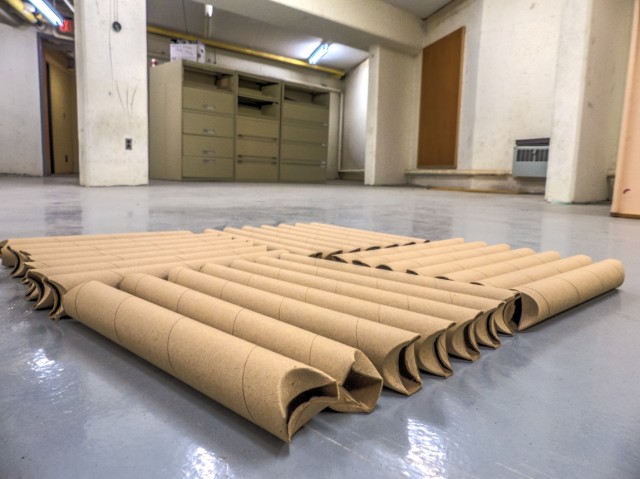
Inside a second command room.
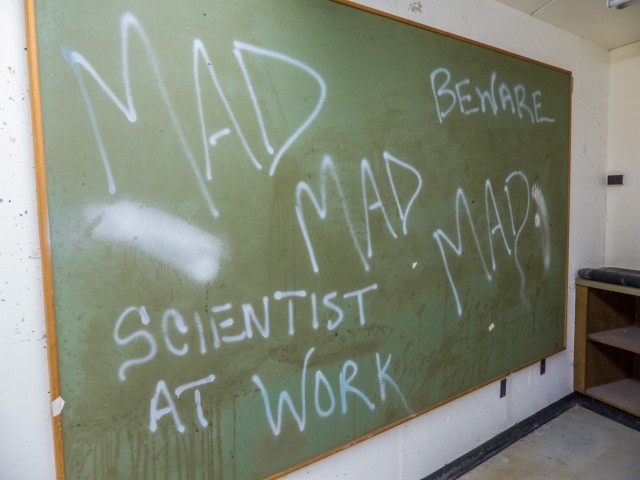
Not just mad, but mad, mad, mad!
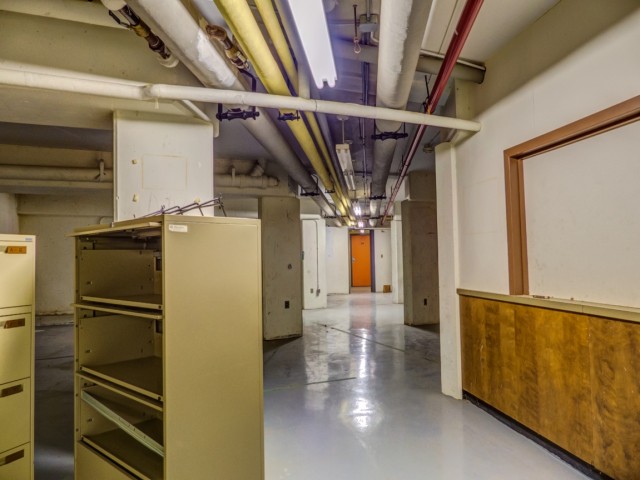
The bunker dates from the late 1960s.
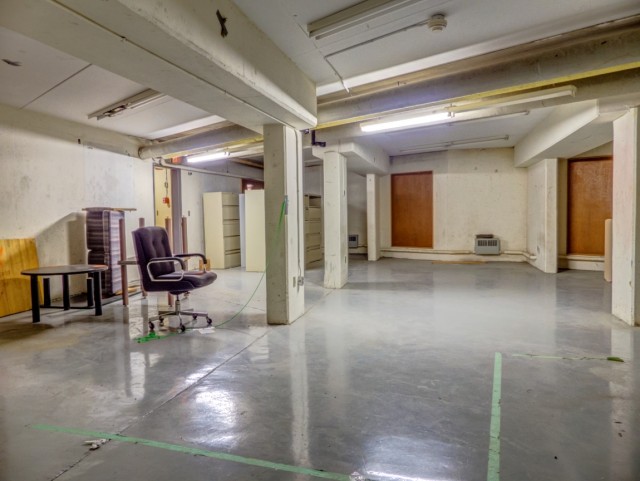
Most rooms are empty or almost so.
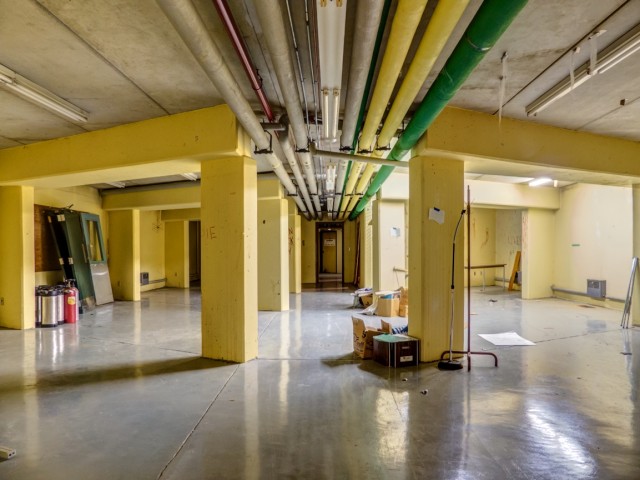
This one was like a giant echo chamber.
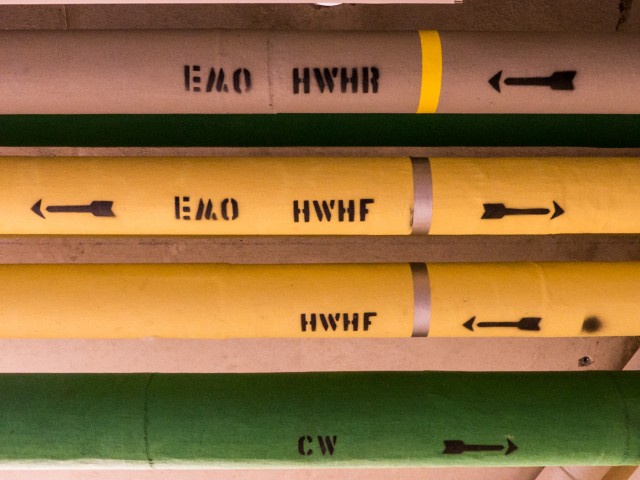
Colour Coded pipes run above.
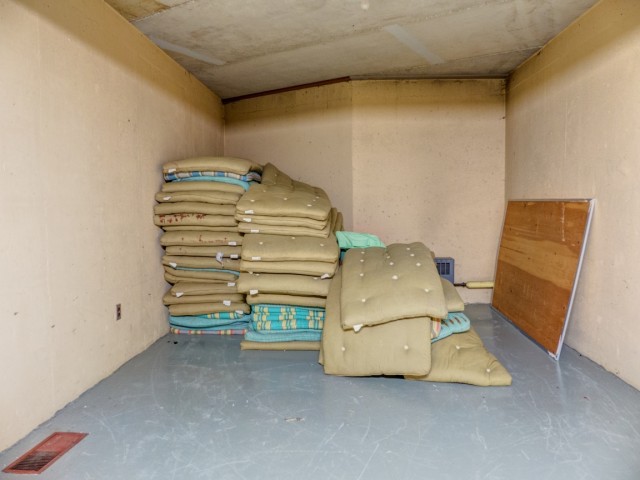
Perhaps some of the original mattresses?
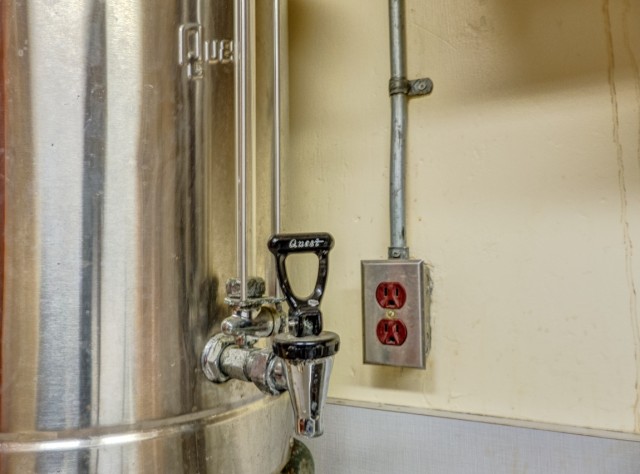
A huge coffee urn.

High five!
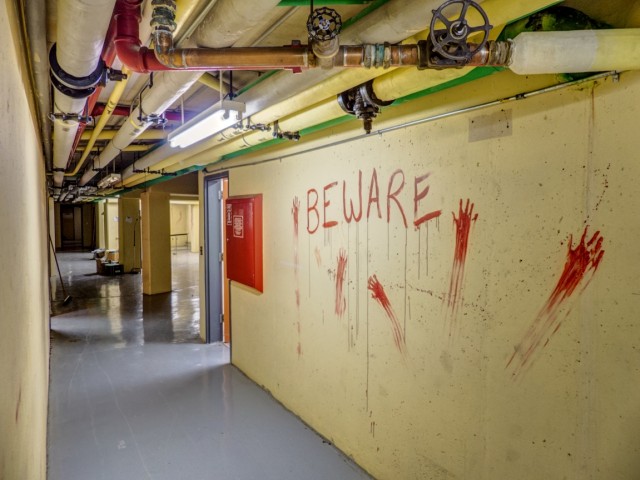
More signs from that party.
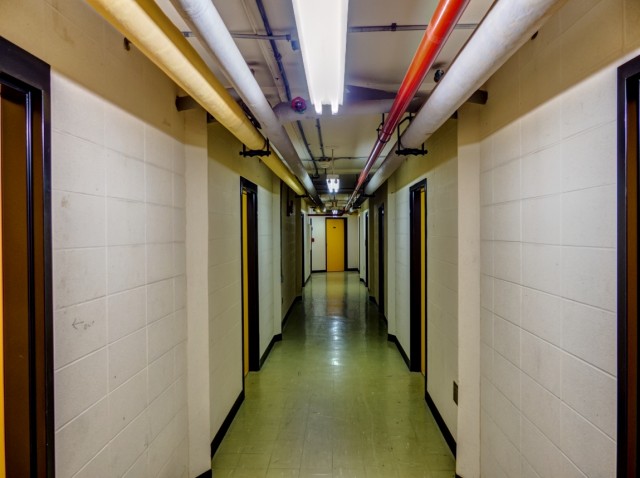
Imagine this bleak view day after day?
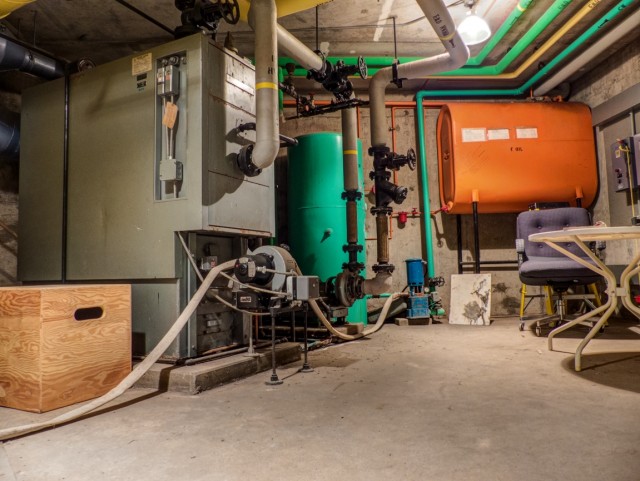
The mechanical room.
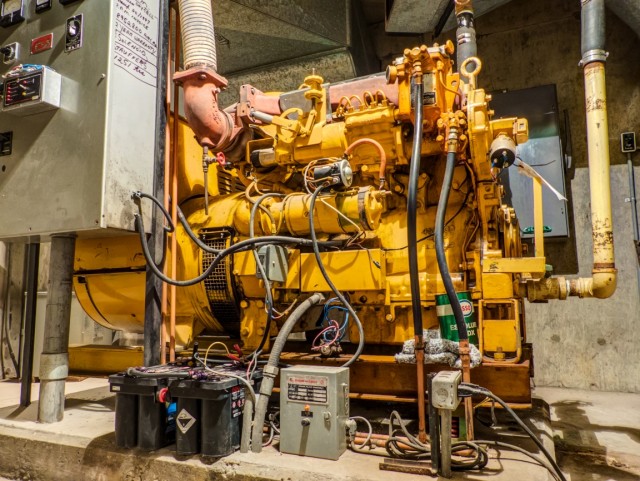
The generator is still fully functional.
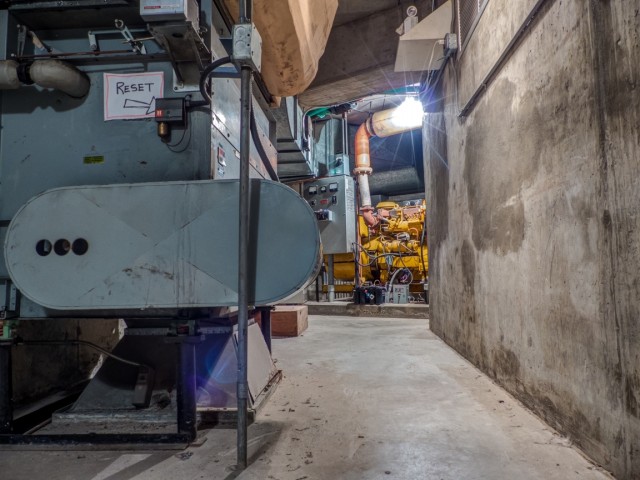
Lots of tight spaces here.
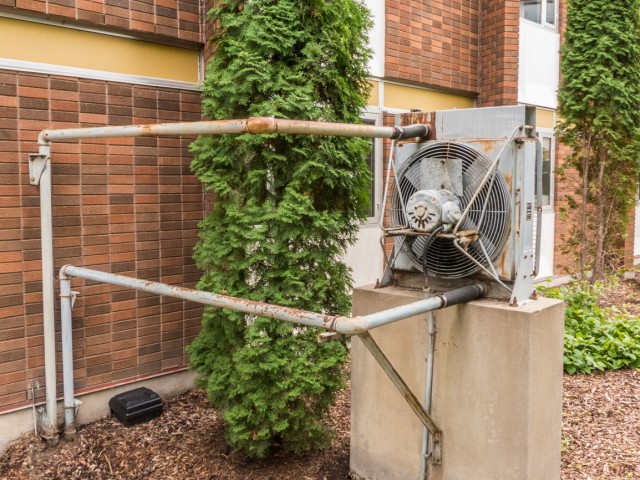
The radiator for the standby generator is outside!
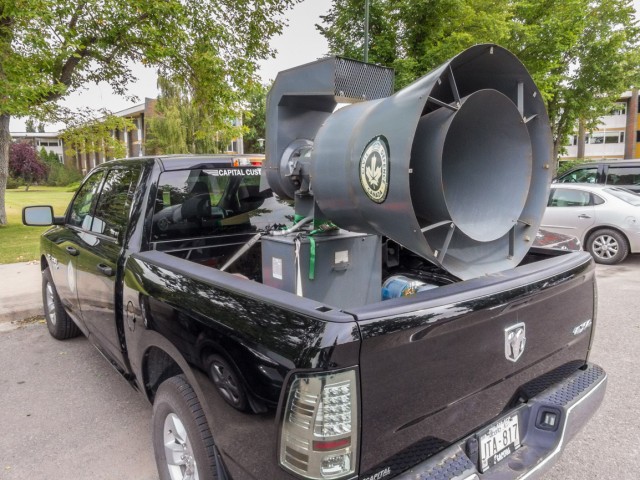
The Canadian Civil Defence Museum owns this air raid siren.

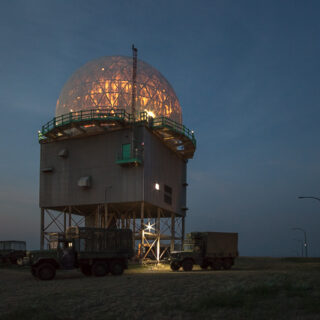
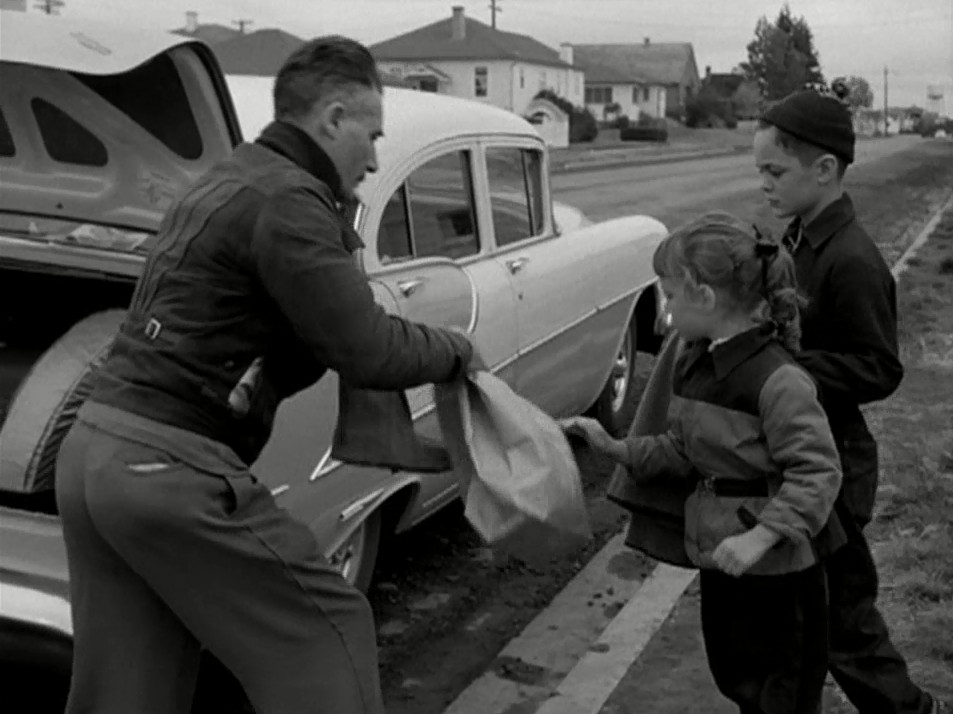
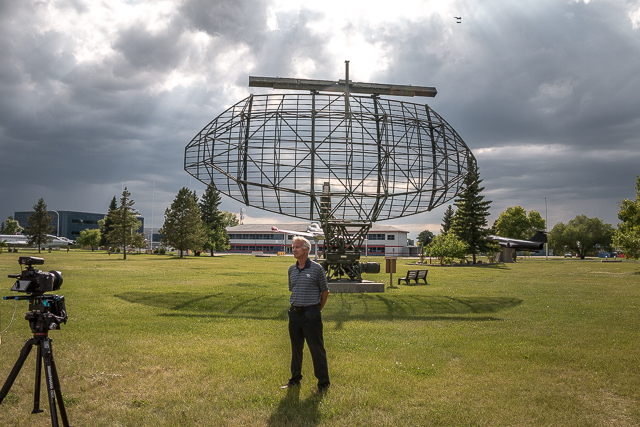
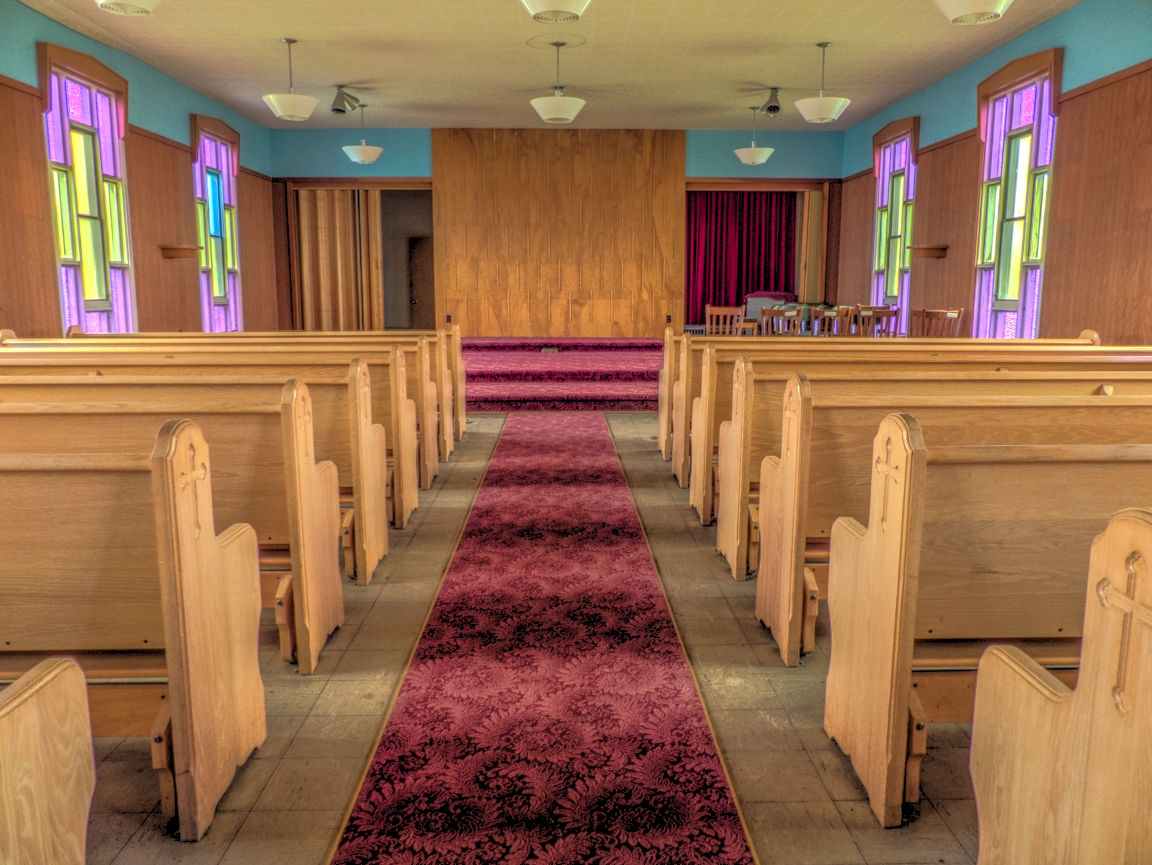
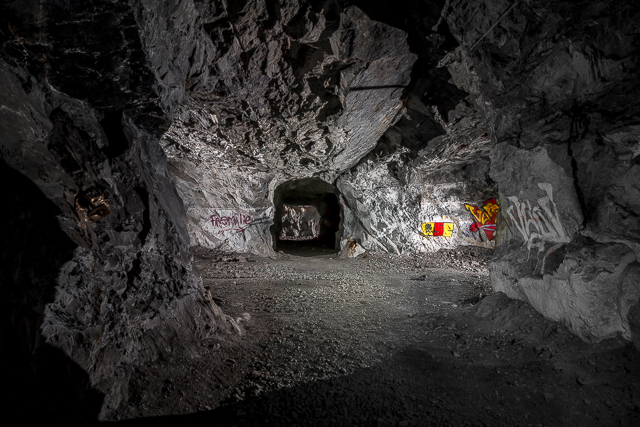
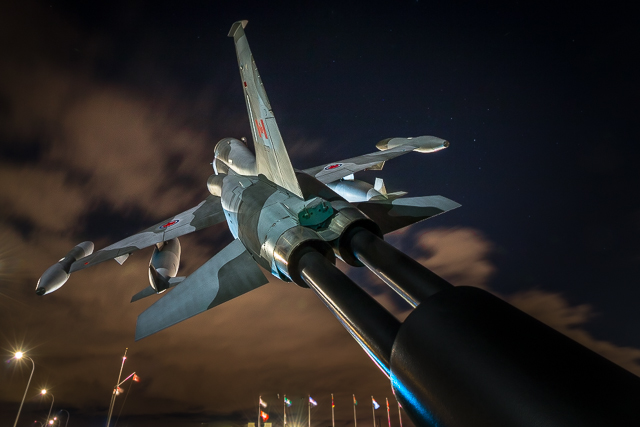
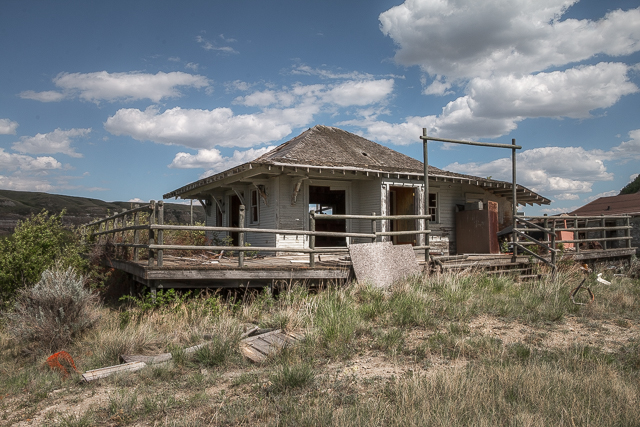
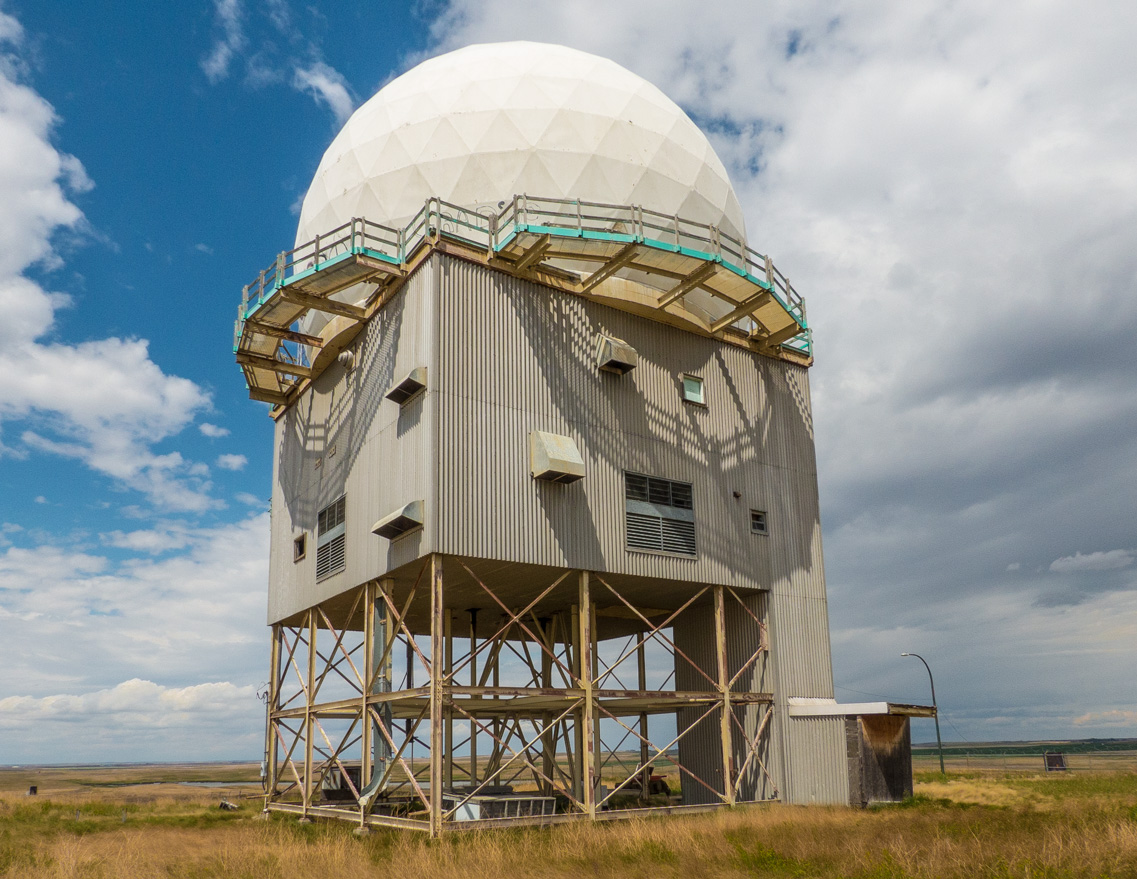
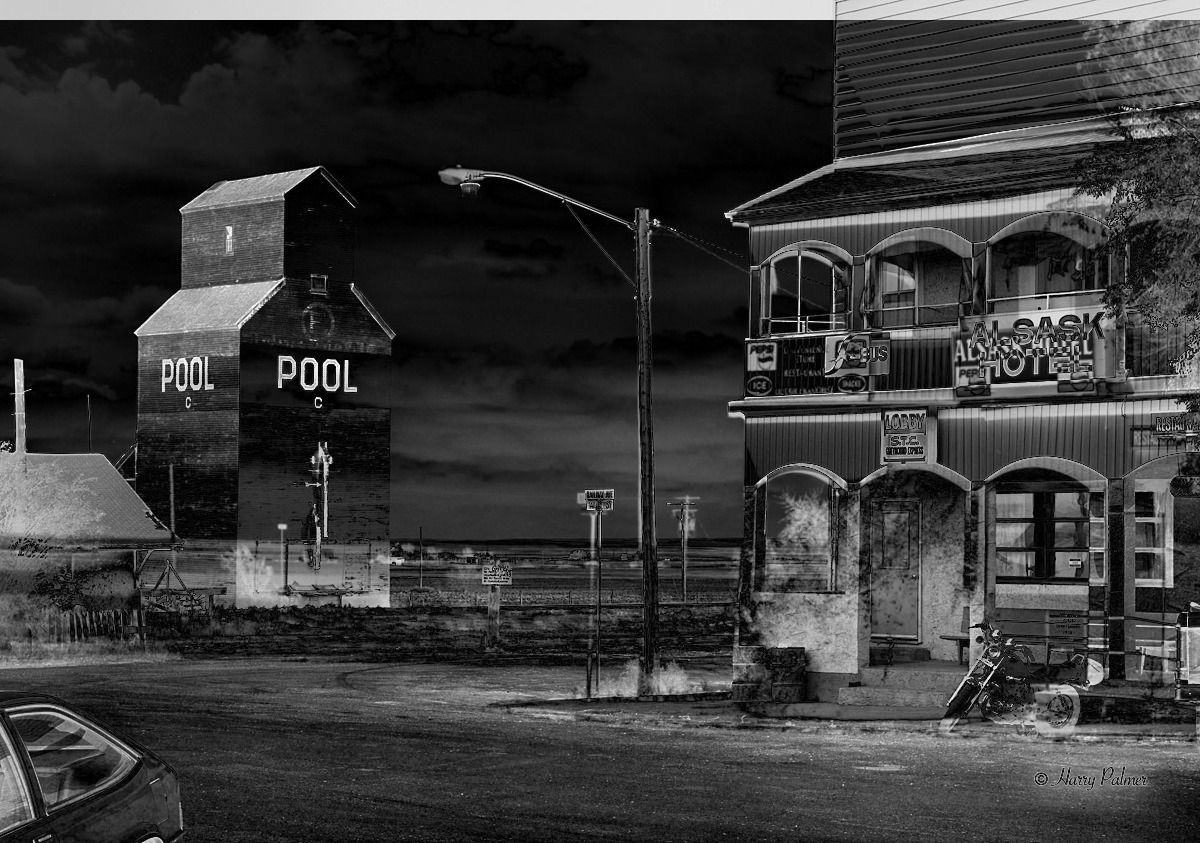
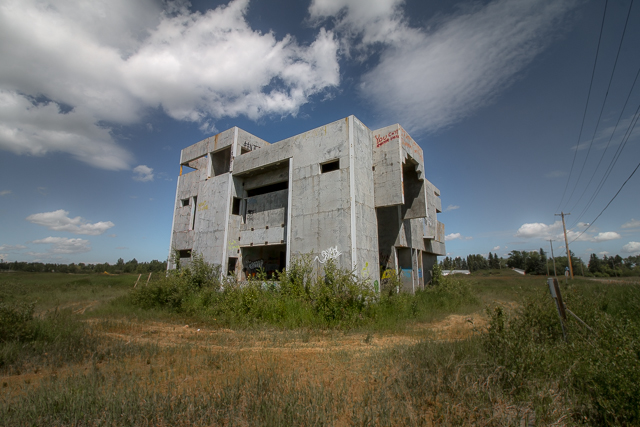
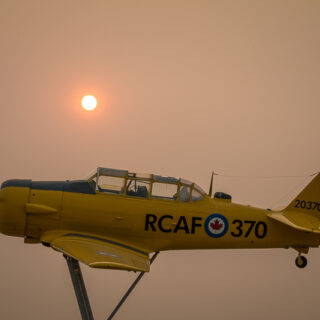
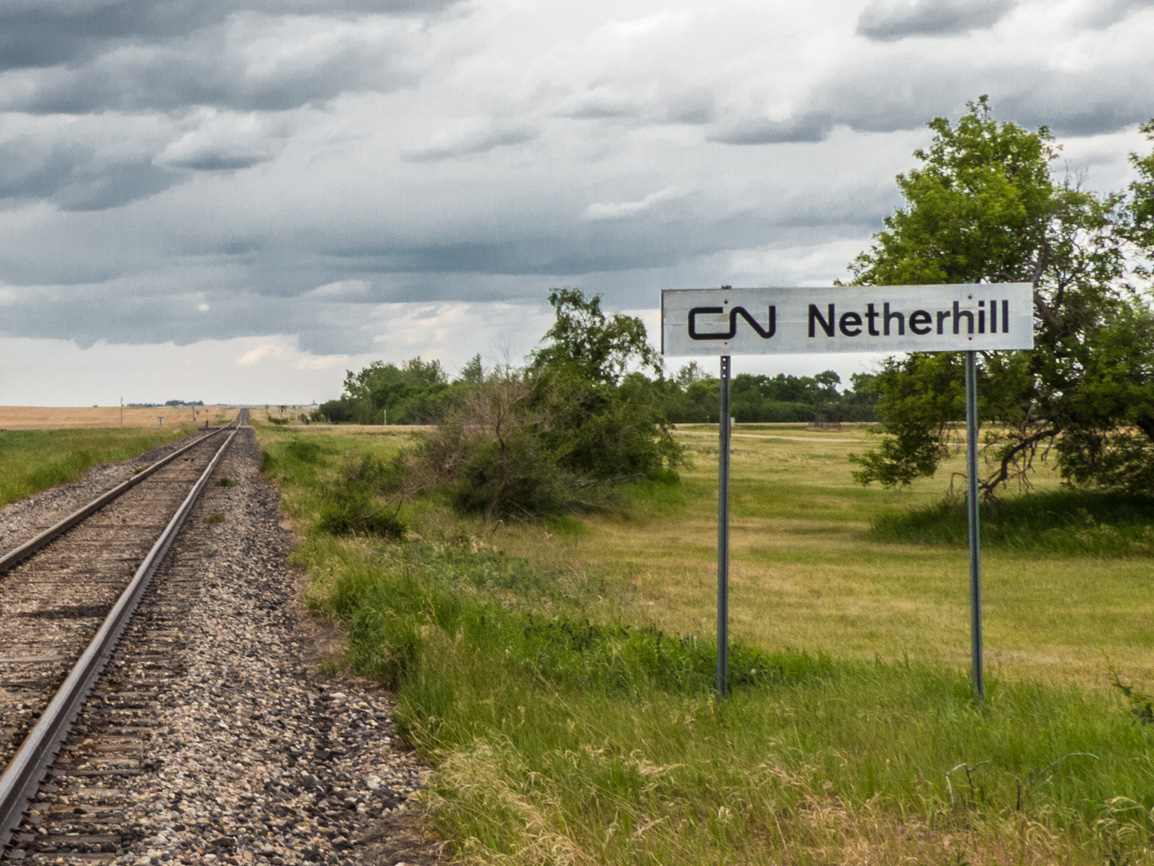







I studied at Olds from 89 to 91. The bunker was used regularly every year for blizzard events. And after the main college terms ended the military would do upgrades to the bunker. During winter storms parts were opened to house travellers when highway 2 closed. Some of us would be constripted to aid setting up cots etc.
Would be interesting not know when it was officially closed down Ms no longer used during storms and other natural disasters
Back online! No one was really sure when it was last used in an official capacity, but the 1990s was suggested. And that makes sense. Thanks for commenting!
Wow what an incredible place to explore
We’ll be the first to tell you…we’re blessed in being able to explore odd places like this.
well there Chris & Connie . the word is spelled nuclear .
Nucular War is way worse! Sounds like someone didn’t read the post – this happens all the time too – the spelling error is deliberate.
Great story as always. Loved the pics but must have been a little creepy being down there. Keep up the good work
Thank you, and yes a tad creepy. We pictured ourselves nuclear war survivors and it was not pretty. Locked down here in some vault while the world burns? Yikes!
I’ve been in a former bunker that was the backup location for a local military base. Everything had been removed except for the blast proof doors. They were the thickest doors I have ever seen with massive latches and hinges.
They built them secure.
Interesting. I am sure there are many more in Canada as a whole. I recall one school I went in Ontario that provided us with instructions on what to do if war happened.
Yes, many institutions of the era had underground shelters. Most were glorified basements not meant to protect you from a blast, but what came after.
I absolutely love this find Chris and Connie! This is what is so much fun about following your site! The pictures are fantastic and the halls remind me of the underground tunnels in Tranquille BC. Never stop doing what you are doing – please tell me you shuffled like a zombie through this bunker? ahaha Cheers
Your comments make us so pleased. It sure was a cool place. I’ll have to look up those tunnels you spoke of. We didn’t do the zombie thing but instead channelled our best Nuclear War survivor who on realizing the world outside is gone, comes to the realization that being dead would be the better option. Caught ourselves off guard and laughed at the thought, then came to think maybe it wasn’t the joke we made of it. Alive, with everyone gone, and locked up in some vault would be no party. All out destruction is a sobering thought!
I bet that Halloween party was GREAT!
We spoke with a couple people who attended…and that was a resounding YES!
Great find Chris. Interesting location for a bunker of this type. You and Connie sure manage to find the hidden treasures.
We love the unknown, the forgotten and the obscure. Exploring stuff like that puts us in our happy place. Glad you liked the piece.
Should use it as a Tourist Attraction now – location would be very interesting to know.
The building is under threat of demolition I’m afraid.
What town is the bunker in? I read through the story and all it says is a town in central Alberta.
If you see an article from us that makes no mention of a location, there’s a reason. This might be to protect the property, it might be at the request of the land owner, or some such thing. In this case, it’s the the sensitive nature of the building above that prevents us from mentioning it. Have a great week!
No problem, then don’t pique people’s curiosity with a little bit of information about the location. Just don’t say anything about the location if it’s not intended for people to know.
Saying something, even if vague seems to satisfy our audience well enough. In fact many thank us for being discrete and protecting these valuable historic sites. If we say nothing at all, then we’ll get overwhelmed by the “where” questions. We tried it.
That’s a fine thank you.
Yeah, a bit of a snarky tone. Sigh.
Wow! Keep up the good work you two!
We’ll keep serving it up! Thanks for commenting.
This is really cool!
The person before you said the same thing. Still, we love every comment!
This is really cool!!
I know – I love Cold War era stuff. So interesting.
That is surreal!
I know, made all the more interesting given the location. A lot of people in the floors above probably don’t know what’s underfoot.
Very very interesting. Read all about these in the book “Give Me Shelter” which starts off with a KABOOM. Ottawa being nuked. Lovely!
I’ll have to look it up. What a interesting period in history.
There was a bunker under the school I went to as well only we didn’t realize it until we went to a village reunion this summer.
Oh now that’s cool! I wonder how many there are out there, hidden away or forgotten about? A lot of them I bet.
Always loved this stuff and its disappearing every few years. I’d love to be able to document this history. It needs to be preserved in photos before it disappears altogether!
Our mission is to document as much as possible. Like you said, it’s all going…
Awesome that you had a chance to visit this place!!! Wow!
It was special!
WOW!!!
A person of few words! But I think we understand what you are wanting to say.
It looks like the bunker located under Olds College… Never seen pictures of it, but remember reading about it in the early 80s. Great pictures!!
They told us not to say (wink, wink)…
yes, I believe so
Shhh, it’ll get out.